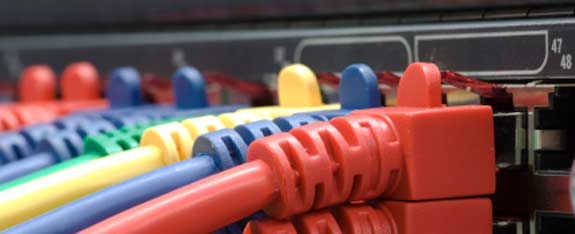All too often, IT teams make the mistake of thinking about Internet access services as a commodity, failing to consider how well connected a provider is with the rest of the Internet. Picking the right Internet service, especially internationally, can be extremely important when evaluating SD-WAN solutions from companies like Aryaka, Cato Networks, Cisco (Viptela or Meraki), Open Systems, Silver Peak, Versa or VMware (Velocloud). To better understand how to select last-mile access services, I gathered global pricing and configuration information from my friends at GlobalInternet, a global aggregator of Internet access connections. Here’s what we found.
The Two Types of Internet Access
Generally speaking providers offer two kinds of Internet access — Dedicated Internet Access (DIA) and broadband Internet access. The two differ significantly in terms of price, performance and uptime. DIA services are just what they say — dedicated. The fiber (or copper) connection is dedicated to the customer. The actual downstream and upstream bandwidth between the customer premises and the Internet is fully guaranteed. Broadband Internet access is your DSL, or cable or fiber connection. Broadband is usually shared among the other customers of the provider, making broadband services less expensive than DIA. The infrastructure for DSL is not shared with other internet users, but with a telephone circuit.
How much less expensive is broadband? As much as 241 percent less in the Pacific region. GlobalInternet compared between DIA (2Mb/2Mb connections) vs. broadband across eight regions. The Pacific was most expensive for DIA and broadband. “Asia” was fourth for DIA and “Central & South America” was second for DIA (see “Broadband and DIA”).
How Much Bandwidth Do You Really Get With Broadband
Given the enormous price difference, broadband can be very appealing to price-sensitive, IT managers. This is particularly true given the fact that broadband often sounds like it provides more bandwidth than DIA. Just look at the below chart comparing various access services. The DSL service offers twice the download speed at less than a third of the price of the dedicated fiber, yet that doesn’t mean the DSL is necessarily the better choice (see figure).
Comparison of Broadband Access Services
| ADSL | Dedicated Copper | Shared Fiber | Dedicated Fiber | |
| Access Technology | ADSL (copper based) | Fiber | Fiber | Fiber |
| Contention Ratio | 1:20 | 1:1 | 1:20 | 1:1 |
| Max Downstream/Upstream Bandwidth | 4Mb / 512Kb | 10Mb / 10Mb | 50Mb / 50Mb | 2Mb / 2Mb |
| Guaranteed Bandwidth | None | 10Mb / 10Mb | 50Mb / 50Mb | 2Mb / 2Mb |
| Uptime | 99% | 99% | 99% | 99.90% |
| Repair time | Best effort | Next Business Day | Best effort | Best effort |
| Price | $87 | $970 | $308 | $336 |
Source: GlobalInternet
With broadband, the actual bandwidth received will depend on a variety of factors, most notably the contention ratio. The contention ratio reflects the number of customers sharing the service bandwidth. Services with a lower contention ratio generally have a higher quality of service.
Contention ratios are expressed as a ratio of number of customers sharing that bandwidth. For example, fiber 2Mb/2Mb (1:4) means that the symmetrical service is shared with four customers with the minimum speed provided at 0.5Mb/0.5Mb. It is, therefore, important to understand the impact of a shared service has on the link performance. Depending on who you share your service with, you may always see your full bandwidth, but then again, you might not.
DIA services should never be overbooked (a 1:1 ratio) as they’re guaranteed. Broadband shares the bandwidth among customers with contention ratios range from 1:2 to 1:60, depending on service provider and price.
Often, providers may not explicitly spell out contention ratios, referring instead to the guaranteed minimum bandwidth. If, for instance the guaranteed bandwidth is 50 percent of the contracted maximum bandwidth, the overbooking is 1:2. How often and how long the actual maximum bandwidth decreases to the minimum guaranteed bandwidth varies from provider to provider and country to country.
Will the Internet Service be Available?
The other aspect to consider is if the service will be available when users need it. Providers deliver uptime, in part by the time it takes for them to repair connections, but also in how they design their infrastructure.
Diverse routing describes how providers run the cabling in its physical infrastructure. It’s an important characteristic when businesses look to ensure availability and minimize downtime. Internet diversity in essence means a building and employees are no longer reliant on a single circuit.
Depending on the type of WAN architecture, diversity can be implemented in a few different ways.
- A backup circuit is the most used approach as a cost-effective solution.
- Full redundancy using two active circuits is a more reliable solution and costs vary depending on access technology used.
- There are also options of using more than two active circuits or backup circuits.
- LTE provides a great tertiary backup circuit.
It all comes down business continuity and your dependency on internet access. Locations running business critical SaaS applications, such as Salesforce or O365, have a higher dependency on the Internet, for example, than branches where users are not running business critical applications.
Internet Management, Invoicing and More
For enterprises deploying a global SD-WAN solution, selecting the right ISP is important.
More than likely, global SD-WAN deployments will require sourcing internet access with multiple ISPs. Managing multiple ISPs with different SLAs, NOCs, languages and invoices increases complexity not only in the selection phase but also during the operational phase.
When it comes to project management, remember that while you may receive a quotation for internet access from a provider, the installation time frame rarely includes the site-survey, which determines whether access facilities exist. So when you are told the installation will take ten weeks, that means “after we have two weeks for a site survey, we will tell you if we can meet the ten week installation time-frame”. If the facilities do not exist, it could be as long as a year. So you need to be informed.
Doing it in house may be difficult for some businesses. Vendors, such as GlobalInternet and Expereo, will manage the last mile infrastructure for your organization. So will some Managed Service Providers. When evaluating these vendors consider a number of factors including geographic reach, support and, centralized billing.



